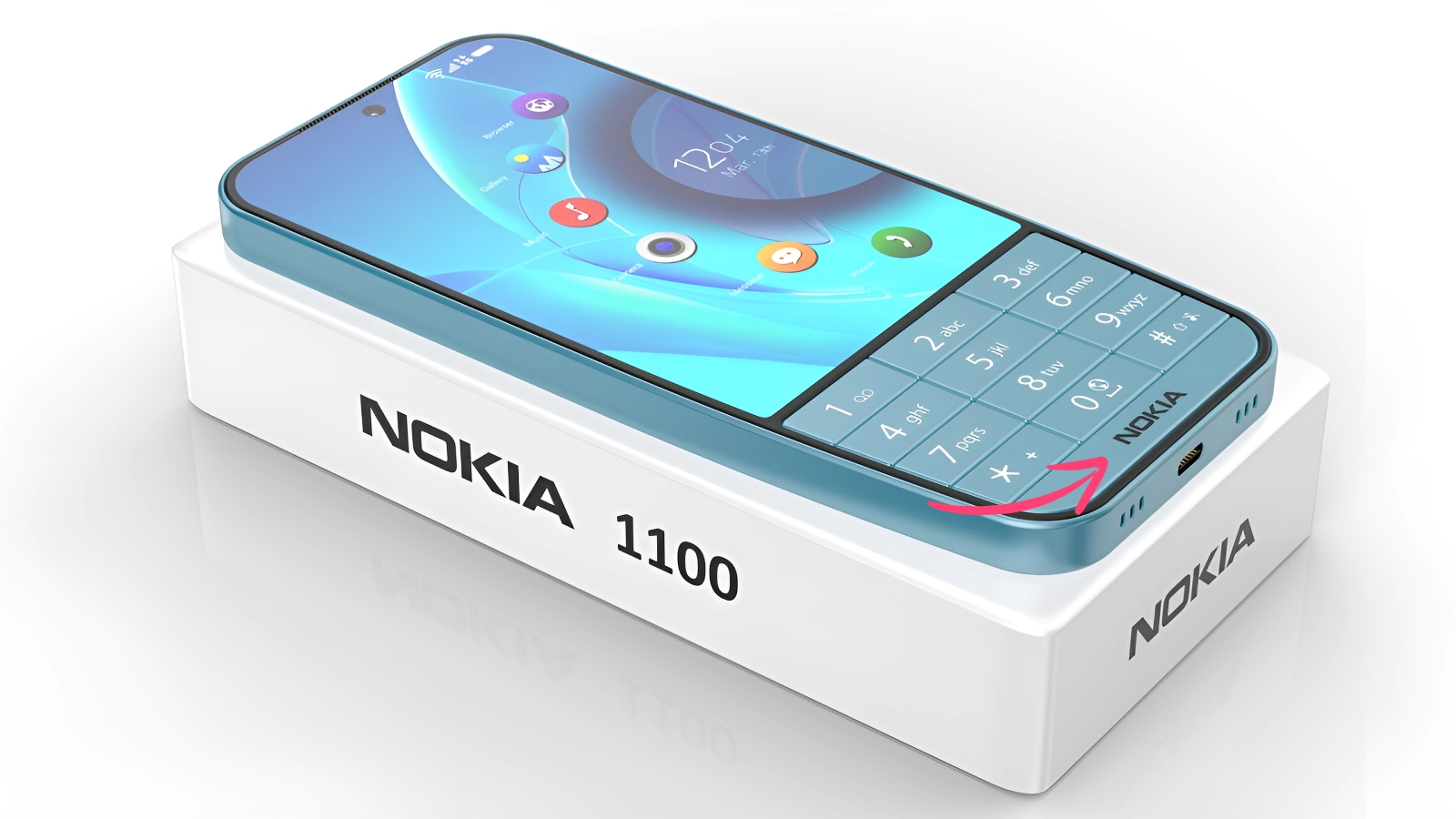Nokia 1100 : In the annals of mobile phone history, few devices have achieved the legendary status of the Nokia 1100. Released in 2003, this seemingly simple phone became more than just a communication tool – it became a cultural phenomenon that defined an entire generation’s relationship with mobile technology. Long before smartphones dominated our lives, the Nokia 1100 proved that sometimes, the most powerful innovation lies in perfect simplicity.
Design Philosophy: Simplicity as the Ultimate Sophistication
Walking into any phone shop in the mid-2000s, the Nokia 1100 immediately caught your attention, not through flashy colors or complex features, but through its honest, no-nonsense design. The chunky plastic body felt reassuringly solid in your hands – a stark contrast to today’s delicate glass sandwiches that require protective cases and constant worry about drops.
The monochrome LCD display, measuring just 96×65 pixels, delivered information with crystal clarity. No fancy graphics, no distracting animations – just crisp, readable text that remained visible even under direct sunlight. The backlit keypad featured large, well-spaced buttons that provided satisfying tactile feedback, making dialing a pleasure rather than a precision exercise.
Available primarily in black and silver variants, the 1100’s aesthetic spoke to practicality over fashion. The antenna protruded proudly from the top, a visible reminder of the phone’s primary purpose: making and receiving calls with unwavering reliability.
Build Quality: Engineering for Eternity
The Nokia 1100 embodied the legendary Finnish engineering quality that made Nokia synonymous with durability. This wasn’t a phone you worried about – it was a tool you depended on. Stories of 1100s surviving drops from significant heights, water exposure, and even more extreme conditions became part of mobile folklore.
The battery compartment required a firm press and slide motion that created an almost ritualistic experience when changing the removable battery. The plastic construction, while not premium by today’s standards, felt substantial and designed to withstand the rigors of daily use across diverse global markets.
Every component felt purposeful and robust. The speaker delivered clear audio that cut through ambient noise, while the vibration motor provided unmistakable alerts that you could feel even in the noisiest environments.

Features: Less is More Philosophy
In an era before app stores and endless customization options, the Nokia 1100 focused on executing core functions flawlessly. The phonebook could store up to 50 contacts – a limitation that seems quaint today but was perfectly adequate for most users’ social circles at the time.
The built-in games provided genuine entertainment value. Snake, Clock, and Memory games offered hours of distraction during commutes or waiting periods. These weren’t complex productions, but they were polished experiences that demonstrated Nokia’s attention to detail across every aspect of the user experience.
The flashlight function deserves special recognition as one of the most practical features ever included in a mobile phone. Long before smartphones made flashlights ubiquitous, the 1100’s simple but effective LED light solved countless real-world problems and emergencies.
The alarm clock, calculator, and stopwatch functions worked reliably and intuitively. No learning curves, no confusing interfaces – just tools that performed their intended functions without fuss.
Battery Life: The Gold Standard
Perhaps nothing defines the Nokia 1100 experience more than its extraordinary battery performance. While modern smartphones require daily charging, the 1100 could operate for a full week on a single charge with typical usage patterns. Heavy users might need to charge every three to four days – a luxury that seems almost mythical in today’s power-hungry smartphone era.
The removable 850mAh battery meant that carrying a spare provided virtually unlimited talk time for extended trips or emergencies. Battery degradation occurred slowly, and replacement batteries remained readily available and affordable throughout the phone’s lifecycle.
Global Impact: Democratizing Communication
The Nokia 1100’s true legacy lies not in its technical specifications but in its social impact. Priced accessibly for emerging markets, this phone brought mobile communication to hundreds of millions of people who had never owned a phone before. It became the first mobile device for entire communities, fundamentally changing how people connected across vast distances.
In rural areas without reliable landline infrastructure, the 1100 became a lifeline. Its robust signal reception and long battery life made it ideal for users who might not have consistent access to electricity for charging.
Vivo X200 FE- A 5800 mAh battery with 90W FlashCharge- storage is 256GB
Cultural Legacy: More Than Just a Phone
The Nokia 1100 transcended its role as a mere communication device to become a cultural touchstone. Its ringtones became instantly recognizable soundtracks of the early 2000s. The satisfaction of composing custom ringtones using the built-in composer created a generation of amateur musicians.
The phone’s durability spawned countless memes and jokes about Nokia’s indestructibility, cementing its place in internet culture long after more advanced devices had rendered it technically obsolete.
Nokia 1100: Timeless Lessons: Function Over Form
Today, as we navigate increasingly complex smartphones with ever-expanding feature sets, the Nokia 1100 serves as a reminder of technology’s core purpose: solving real problems reliably and efficiently. Its success wasn’t built on cutting-edge specifications or revolutionary features, but on understanding exactly what users needed and delivering those capabilities flawlessly.
The Nokia 1100 remains a masterclass in focused design, proving that sometimes the most revolutionary approach is simply making something work perfectly for everyone, everywhere.
